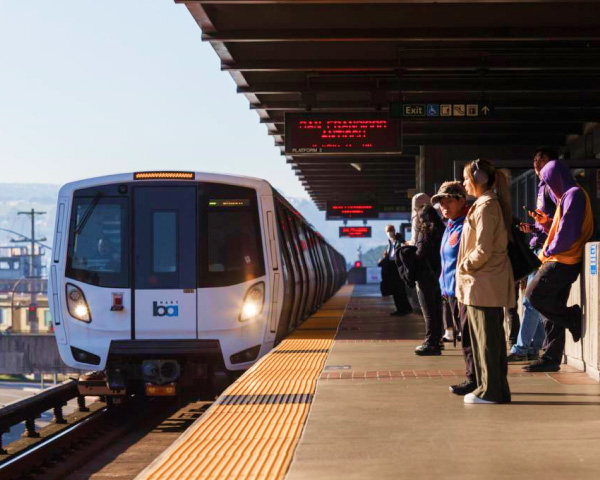It also comes at the very end of the academic year. With less than a week before the last school day, the strike has all but shut down district schools across Union City and South Hayward, putting final grades and graduation proceedings in limbo, and upending most end-of-year activities.
“I’m an eternal optimist,” said Lisa Duncanson, a science teacher at Delaine Eastin Elementary School, when asked if she thought a deal could be reached before the end of the year. “But I’m finding it hard to get my hopes up.”
For weeks now, district and New Haven Teachers Association officials have been mired in a marathon of near-daily negotiations, often lasting into the early hours of the morning. Negotiations continued Friday.
The district’s “last, best and final offer,” made on Thursday, was quickly rejected by union officials, although unlike previous offers, teachers were asked to review it and give feedback.
The district’s proposal gave teachers two somewhat confusing options, a choice between more cash upfront or more modest but ongoing salary hikes. The first included a 3% on-schedule salary increase for the 2018-19 school year, retroactive to Jan. 1, 2019, as well as a 3% off-schedule onetime pay increase for the upcoming school year. The second option included a 4.5% off-schedule, one-time increase for the 2018-19 year and a 3% ongoing increase beginning in July. Both also included the possibility of up to a 1% additional increase if more state funding became available.
“The thought is that some folks don’t actually like off-schedule increases, especially folks getting close to retirement,” said district spokesman John Mattos. “Do you want some immediate cash now for your folks and get 3% next year, or do you want to give something to your retirees, which everyone would get?”
Although a significantly better offer than what the district had put forward at the onset of the strike — a 1% increase for next year and a onetime 3% payment — union leaders said it still fell far short of the union’s current demand of a 6% ongoing increase covering the 2018-19 and 2019-20 school years.
The union, which initially sought a 10% percent ongoing bump, is now also insisting that striking teachers be fully compensated for every day they’ve been on the picket line, a demand the district has adamantly refused and called “regressive.” The union argues that the district can easily afford the “return-to-work bonus” because of the huge amount of money it has saved over the last three weeks and the fact that it’s not losing any state funding because of low attendance figures this late in the year.
The union is also demanding that the district give striking teachers nearing retirement a full year of credit toward their retirement plans.
“I think we are sort of at the point where everything we worried about at the beginning of the strike has given way to just anger. Seething anger,” said Duncanson. “The district has pulled the rug out from under us so often. … The things that they’re doing, it feels like they’re trying to punish the teachers, but in fact they’re taking it out on the kids.”
But the district says it has stretched itself as thin as it can go.
The district estimates the union’s proposal would result in roughly $18 million in cuts and is simply not feasible, given its declining enrollment and deficit spending.
“We just can’t swing that. It would devastate programs and possibly compromise student safety,” Mattos said, noting that a number of support services would likely land on the chopping block. “It would be a gigantic hit.”
Although schools have remained open since the strike began on May 20 — staffed largely by district personnel — virtually no teachers have crossed the picket line, and only about 10% of students have come to class, according to the district. District-run after-school programs have also been canceled, including one geared toward low-income students that provides meals.
And unlike the Oakland teachers strike earlier this year, during which scores of community centers, churches and libraries offered varying degrees of programming for children not attending school, there appear to be many fewer options available in this community. Most kids are simply staying home, according to teachers and district officials.
The district said it has already started calculating end-of-year grades for seniors — who were scheduled to take their final exams this week and need to know if they’re graduating — by taking the highest of three quarterly grades from the past year. It plans to make similar calculations for other grades starting next week, if there’s still no resolution.
District teachers make an average of $96,544 a year, the highest in the county, a point the district has underscored repeatedly. But unlike their counterparts in most neighboring districts, teachers here also pay full health care premiums, which union members say can add up to at least $20,000. The union said it is simply seeking a cost-of-living increase.
Ku’e Angeles defended the union’s latest offer, arguing that the district has saved a considerable amount of money over the last two weeks and can afford to compensate teachers for time lost without cutting into the future budget.
“I don’t think we’re asking for something that would come close to bankrupting the district,” he said. “I’m hoping that we can come to terms.”
After a deal is eventually reached, the proposed contract must then be approved by a majority of union members.
For teachers and students, though, frustration has continued to mount as the strike drags on.
“I think it’s ridiculous we’re still out here,” Mike Isenberg, a history teacher at James Logan High School in Union City, said. “This isn’t about money, this is about equity.”
There’s a feeling of disbelief among teachers and students that this is still going on, he added.
“We all hope that is it going to end, every day,” he said. “Even graduation is in question right now.”

